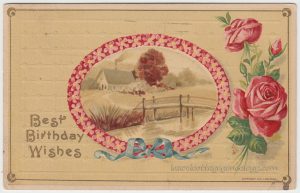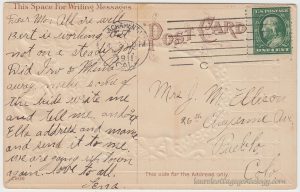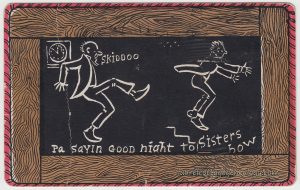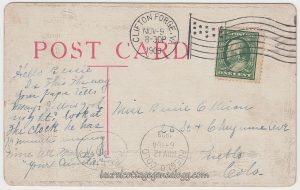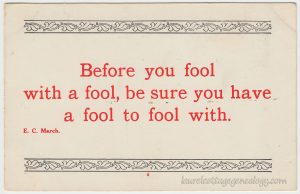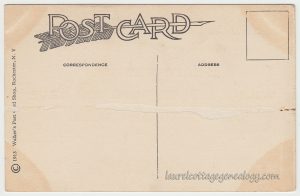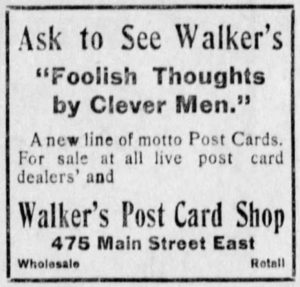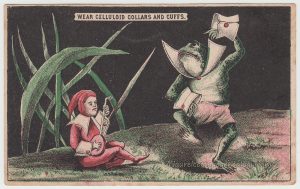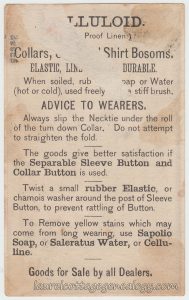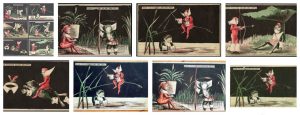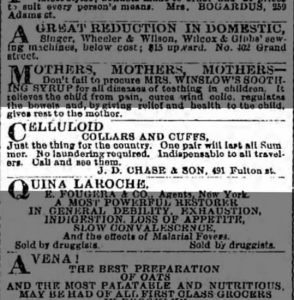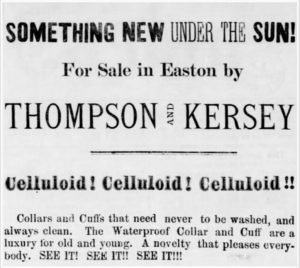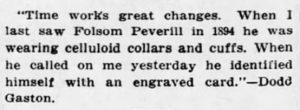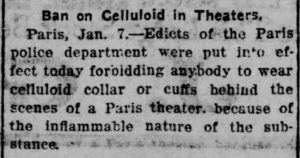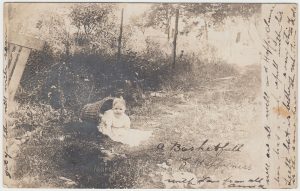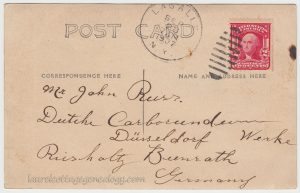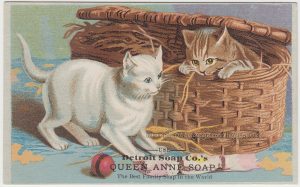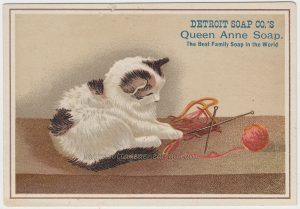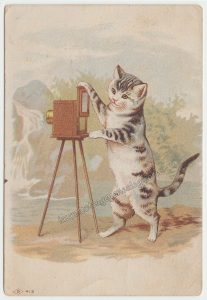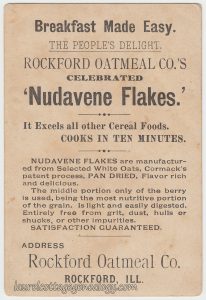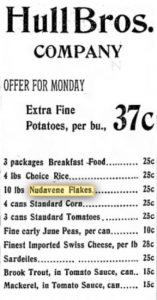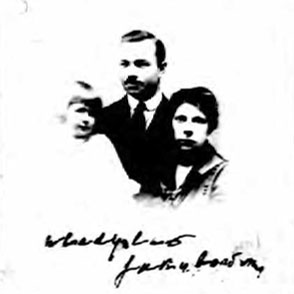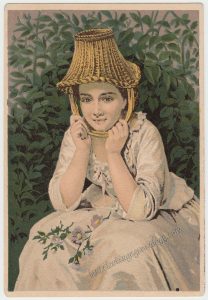
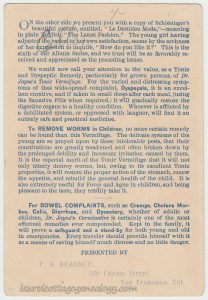
Trade Card, circa 1872 – 1883 from P. A. Kearney, San Francisco.
Price: $15.00 Size: About 3 and 1/4 x 4 and 3/4″
A trade card advertising Dr. Jayne’s Tonic Vermifuge and Dr. Jayne’s Carminative, as offered by druggist, P. A. Kearney, of 501 Folsom St., San Francisco. The first paragraph describes the eye-catching front of the card as:
“On the other side we present you with a copy of Schlésinger’s beautiful picture, entitled, ‘Le Dernière Mode,’ – meaning in plain English, ‘The Latest Fashion.’ The young girl having adjusted the basket to her own satisfaction, seems by the archness of her expression to inquire, ‘How do you like it?’ This is the sixth of our Album Series, and we trust will be as favorably received and appreciated as the preceding issues.”
Rendition of or inspiration for….
The artist referenced above Henri-Guillaume Schlesinger (1814 – 1893) was born in Germany (Heinrich Wilhelm Schlesinger) and became a nationalized citizen of France. He was both prolific and popular, and gained the French Legion of Honor medal in 1866.
But we didn’t find any Schlesinger paintings of a young woman with an overturned basket on her head. Indeed! Would one imagine that he even might have created one? (Not to say that he might not have had a fine sense of humor, or a whimsical side….) What’s more likely, is that our trade card artist’s inspiration came from Schlesinger’s “Portrait of a Young Woman,” (below, center) also listed under the title “The Young Beauty” an oil on canvas done in 1873. (And we’ve included two other examples of Schlesinger’s work, just in wondering whether Schlesinger had used the same model for all three.)
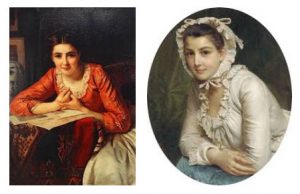

Trendy
Trade cards and post cards were often fashioned on subjects that were currently or recently in the public eye: art, music, fashion, movies, politics, “running jokes” etc. I’m reminded of a few postings put up earlier here at Laurel Cottage….the first two regarding fashion and hats and the second, a prime example regarding a card and its likely source(s) of inspiration. (The “from whence it came” kind of thing.)
How The Fashions Came
Trimmed Garbage Pail
By The Sad Sea Waves
Kearney not Kearny
Peter A. Kearney, druggist, appears at the address on the trade card, 501 Folsom Street, in the 1880 San Francisco city directory. The address was both his office and residence at this time. More searches reveal that Peter Alfred Kearney was born in New York City in 1848, started in the medical field as a druggist around 1869, graduated from Cooper Medical College in 1884, and married Mary Whitbeck in 1891. As far as the date for our trade card, the 1872 city directory shows Peter A. Kearney, druggist at the southwest corner of First and Folsom. This may have been the 501 Folsom address. By 1880 – 1883 he is listed in the city directory at the actual address 501 Folsom, so the 1880 – 1883 might be an even better time estimate for our trade card. (Lastly, I had gone running to look up a map re Kearney and San Francisco but our Kearney is with a different spelling and no relation to the well-known Kearny St. in that city; just FYI, in case the name made you wonder for a sec.)
_________________________________________________________________________
Sources: Henri-Guillaume Schlesinger (1814 – 1893) Galerie Ary Jan. (www.galeriearyjan.com). Accessed 08/19/2017.
“Henri-Guillaume Schlesinger Auction Price Results.” (invaluable.com). Accessed 08/19/2017.
“images of paintings by Henri-Guillaume Schlesinger.” Google.com search. Accessed August 19, 2017.
National Archives and Records Administration (NARA); Washington D.C.; NARA Series: Passport Applications, 1795-1905; Roll #: 326; Volume #: Roll 326 – 01 May 1889-07 May 1889. (Ancestry.com).
Henry G. Langley’s San Francisco Directory, 1869. p. 345. Ancestry.com. U.S. City Directories, 1822-1995.
Henry G. Langley’s San Francisco Directory, 1872. p. 361. Ancestry.com. U.S. City Directories, 1822-1995.
Langley’s San Francisco Directory, 1880. p. 495. Ancestry.com. U.S. City Directories, 1822-1995.
The San Francisco Directory, 1883. p. 608. Ancestry.com. U.S. City Directories, 1822-1995.
Pacific Medical and Surgical Journal and Western Lancet. January 1886, Vol. XXIX. p. 223. (elane.stanford.edu).
Marriage records, select counties and years. California State Archives, Sacramento, California. (Ancestry.com)

